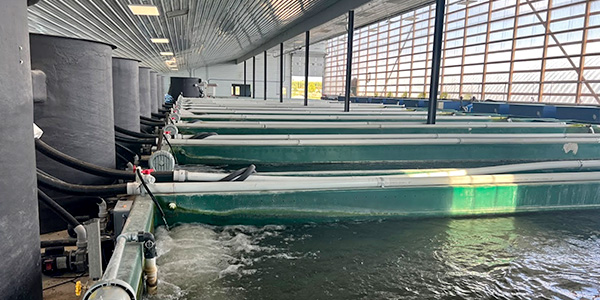How to Net and Handle Koi Fish The Right Way
Posted by Ellen Kloubec on 30th Aug 2013
If you’ve ever watched a seasoned pro net and bag a koi and thought to yourself, “Looks pretty simple, I could do that,” and if you’ve ever chased a koi around a retail tank with a net until your brow beads up with sweat and your arms are burning and sore, all the while thinking, “I can do this!” then you’re not alone. The process of catching, netting and bagging koi can be a very stressful experience, for both human and fish! But, with the right tools and a little insight you can soon become an expert in the store fish department.
By handling koi the right way you will build confidence and gain credibility with your customers. Koi can become damaged if handled incorrectly. By using the right equipment you will reduce the risk of unnecessary damage to their delicate fins and slime-coat as well as eliminating the stress of being captured and moved.
Tools of the Trade
1. Pan Net
2. Viewing Bowl
3. Poly Bags
4. Sock Net
5. Oxygen
6. Elastic Bands
A pan net is a very shallow net that is used to corral the koi and guide it into a viewing bowl. Use slow and deliberate movements when approaching the desired koi with your net. Quick and jerky movement will make the koi become very alarmed hence darting and fleeing. It is also a good idea to stay very quiet when netting koi as loud voices can result in the same adverse effects. Slowly move the pan net through the water with a left to right (slicing) motion; drag will be reduced and it will glide through the water easily this way.
Once you have the desired koi captured bring it to the surface but do not lift the koi out of the water. By tipping the handle upward you can reduce the chance of escape by jumping. Next, rest the rim of the pan net on the edge of a viewing bowl that is partially filled with water. With your free hand tilt the viewing bowl toward the net to allow more water to spill into the bowl by submerging one side. Gently guide the koi out of the pan net and into the viewing bowl simultaneously. The koi will gladly swim into the bowl to escape the net. At first try you may end up with the viewing bowl completely filled with water, but with practice you will become more proficient. Be sure to maintain enough water in the bowl to completely cover the koi’s dorsal fin then allow your customer to inspect the fish.
Next, add a small amount of water into a poly-bag so it is ready to accept the koi. Place the doubled poly-bag in a bucket or another koi viewing bowl for stability. It is a good idea to prepare the poly-bag before you get started with the netting process.
Now you will use a sock net to transfer the koi into the doubled poly-bag for your customer. Start by getting the sock net wet. Then put the rim of the sock net into the viewing bowl while holding onto the handle. Calmly coax the koi into the opening. After the koi swims inside the sock net grasp the open end with your free hand to close the tail of the net. Twist the handle to close the opening of the sock net so the koi cannot escape.
Now you can carefully lift the koi from the viewing bowl while protecting its delicate skin with the water inside of the sock net. Be sure to keep the sock net as straight (horizontally) as possible when lifting to avoid a spinal injury to the koi. Immerse the tail end of the sock net into the water inside of the poly-bag. Then release the koi by simply letting go of the open end of the sock net and gently lifting up on the handle. The koi will glide out of the sock net and into the poly-bag with minimal effort. Finally, add just enough water to the bag to ensure that the koi’s gills and dorsal fin are completely covered with water. Actually, the amount of oxygen used to inflate the bag is more important than an over abundance of water depth.
Next, remove the atmospheric air from inside the bag by collapsing the top of the bag to the water level. Then insert an oxygen hose into the bag and hold the bag tightly around the hose. Inflate and twist the top of the bag tightly closed. Secure the twisted end with an elastic band. The koi is now ready for transport to its new home. Remind your customer to keep the koi bag out of direct sunlight during the trip home so it does not become over heated.
Congratulations, you have just transferred a koi from holding tank to viewing bowl then into a poly-bag. Finally, you can say to yourself, “I did it!”


